Changing Plains
When I decided to do the Great Plains Gravel Route this summer, a major factor was the idea that by going north during summer, I’d have tailwind nearly every day. That hadn’t worked out. The wind was rarely from the north, but was often from east or west, or at least SE or SW. Because the route meandered back-and-forth so often, it rarely went true north, and as luck would have it, every time I went east, it was from the east or southeast, and vice versa when I was going west.
It wasn’t until the OK-KS border when I finally got some tailwind, plenty of sunshine, and good gravel all day. This is what I’d had in mind for the whole summer.
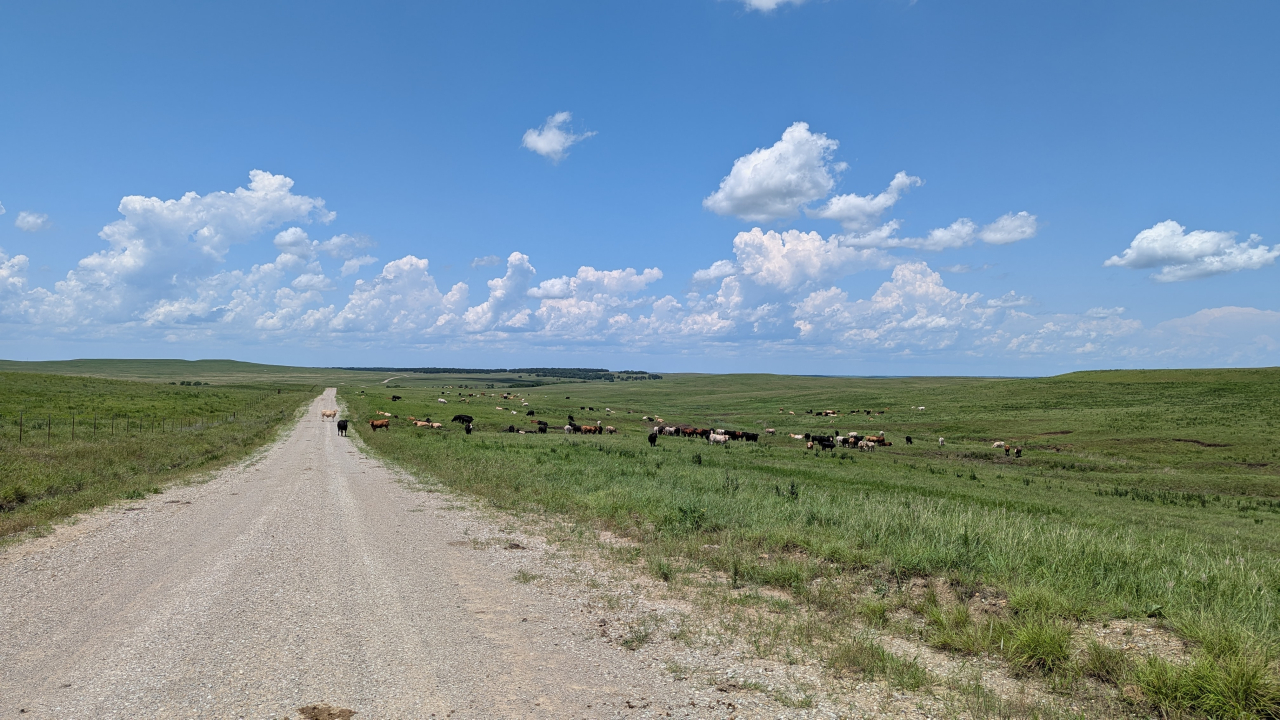
On the very next day, I encountered the worst mud I’d ever seen. It got to the point that not only could I not ride Teeder, I couldn’t even push her. Instead, I was forced to lift the bike, which now weighed twice as much, and carry her out of the mud pit.
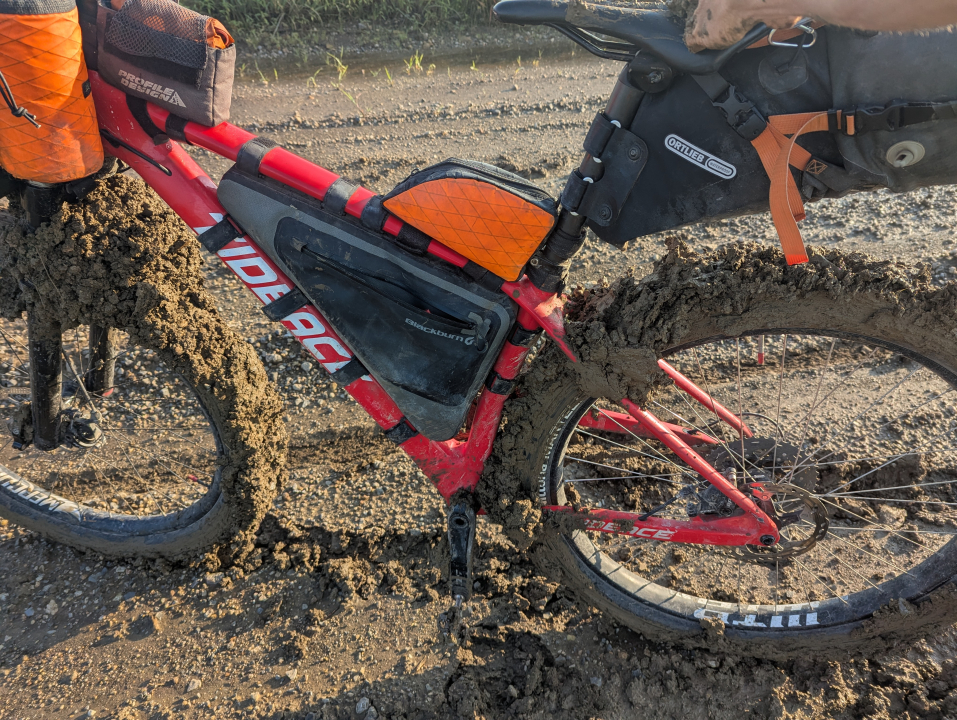
I had no idea how long this would go on. Another 100 meters? Another 10 km? Is this the only bad part, or would it be like this off-and-on all day? I backtracked and took pavement for the rest of the day.
It was at this point I realized the Great Plains Route is poorly curated and the designers clearly didn’t test ride all the roads. I’d have just as much luck selecting roads at random, and I wouldn’t have to spend all day glued to my phone either. From here on out, I took the official route as a suggestion and did whatever I wanted, with better results.
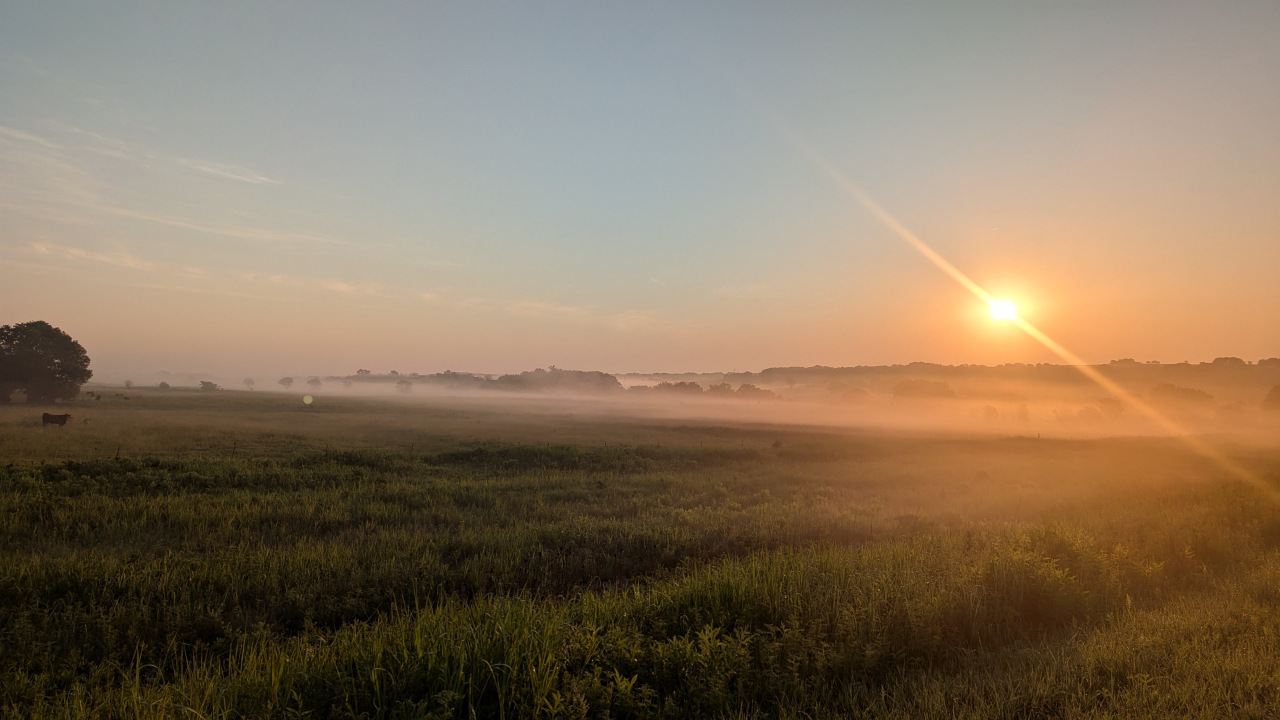
It somehow didn’t occur to me that I’d be crossing the popular TransAm route, and that I might do so in a town.
The TransAm is a popular coast-to-coast route, ridden by a few hundred cyclists every summer. The route is designed by Adventure Cycling Association, which publishes maps with points of interest. It’d be better to simply print a guidebook with points of interest and let people use a GPS phone app for map purposes.
Because the TransAm is so popular, and has been around a while, nearly every town on the route has some kind of accommodation for the riders. At one town, you might be allowed to camp in the city park, in another, a church might allow cyclists to sleep in the basement, or you could sleep on the gym floor of the community rec center, and so on. The towns are generally happy to provide this for free, because it means a few hundred cyclists will stop for the night and buy dinner, buy some groceries, buy other supplies (like sunscreen), and so on.
The TransAm was first born in 1976, when a few crazy people got the idea to celebrate the country’s bi-centennial with a “Bike-centennial” coast-to-coast ride. Over 4,000 people participated, most of them touring for the first time. Many of them simply grabbed their 10-speed, filled a bag or two with all the supplies they could, and took off.
There’s already some chatter about making 2026 a big year for the TransAm, in order to celebrate its 50th anniversary (and the country’s 250th anniversary). There’s a strong possibility that much like the 1st year, there’ll be not a few hundred, but rather a few thousand cyclists riding coast-to-coast. I’ve decided I have to be a part of it! Sounds like a great time, riding across the country, meeting a bunch of like-minded adventurous people from all over.
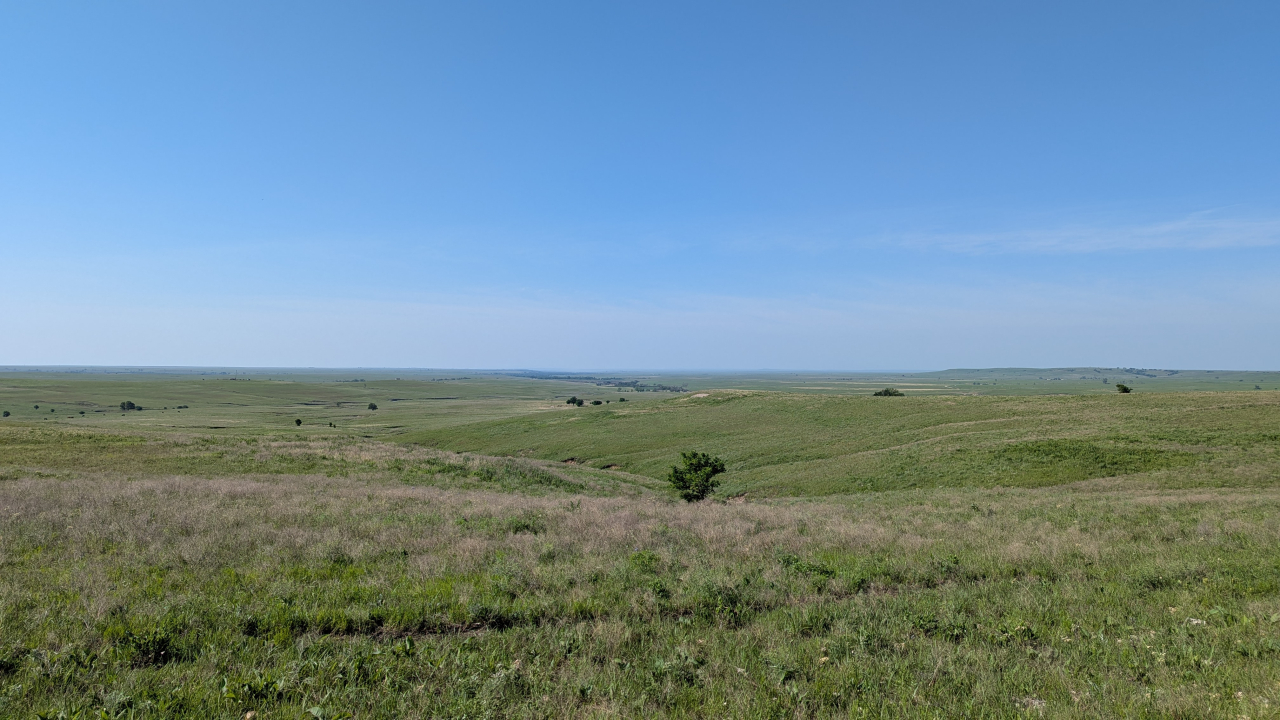
While in Eureka, I didn’t initially realize I was on the TransAm route. My first clue while using another Sonic coupon.
Carhop: “So are you going coast-to-coast?”
Me: “No, border-to-border! South-to-north!”
Carhop: “And you just carry everything you need on your bike like that? You camp out?”
Me: “Yep! Everything I need. I heard you can camp at the city park that way.”
Carhop: “Yeah man, that’s so cool, I really admire what you guys do.”
You guys? Like he sees touring cyclists frequently?
The second clue came at the city park, when I walked over to the pool in order to ask a lifeguard if they knew where the camping area was. Before I got a chance to say anything, they told me showers are free for cyclists.
How’d he have a built-in response to that?
After a shower, I wheeled Teeder over to the camping area (near a playground) and saw two other cyclists with panniers in the area. They were packing them back up.
“Are y’all camping here also?”
“We were, but this camping area, it is quite shit. The playground. We heard there was something else in a living assistance, I’m not sure what, so we’re headed over there.”
“You think they got room for one more?”
Anna and Feline were both Dutch and had identical Koga touring bikes, with Rohloff hubs. They were riding the TransAm westbound, and at this point, they were nearly halfway done. Earlier in the day, they’d met Shawn and Sarah two Kentuckyites who were riding road bikes with racks clamped onto the frame. They’d somehow found out there’s a spare room in an assisted living facility, and all five of us could stay there, most of us on the floor.
For the first time in about a week, I got to use a washing machine. I’m very diligent about rinsing my clothes every day, and that does the trick, but it’s a wonderful luxury to start the day’s ride with 100% clean clothes.
Staying clean on a bike tour is a seemingly futile effort, but it’s important. If you don’t, the sweat/salt and grit buildup in your shorts and socks leads to chafing, saddle sores, blisters, and other graphically unpleasant phenomena. The comfort difference between riding in clean vs. dirty clothing can make or break several days of riding.
It’s equally important to keep yourself clean (or at least clean enough). In particular, I make a point of washing off my sunscreen every day. Sunscreen buildup gets filthy; sweat runs into it, dirt gets stuck in it, and by the end of the day, you have this layer of muck stuck to your arms, legs, face, and neck. If you don’t scrub it off, not only does it simply feel gross, but you have to try to apply sunscreen on top of it the next day, which only makes it worse. The sunscreen might not even get properly absorbed by your skin, since the grime is in the way, and then you get burned.
Not to mention the increased likelihood that a tiny scratch or scrape will get infected if you’re covered in general nastiness. Again, it seems futile, and you’ll never be 100% clean for more than an hour or two, but it’s worth the effort to at least get clean enough.
People joke all the time about how flat Kansas is, and on a large scale, that’s correct. But up close, it’s not flat at all. Because the hills aren’t all that big, the roads go ahead and go straight up and down them, rather than curving around. Up close, Kansas is quite hilly. The day with the 3rd-most climbing was in Kansas, and only one of my four days in Kansas had below-average climbing compared to the whole route.
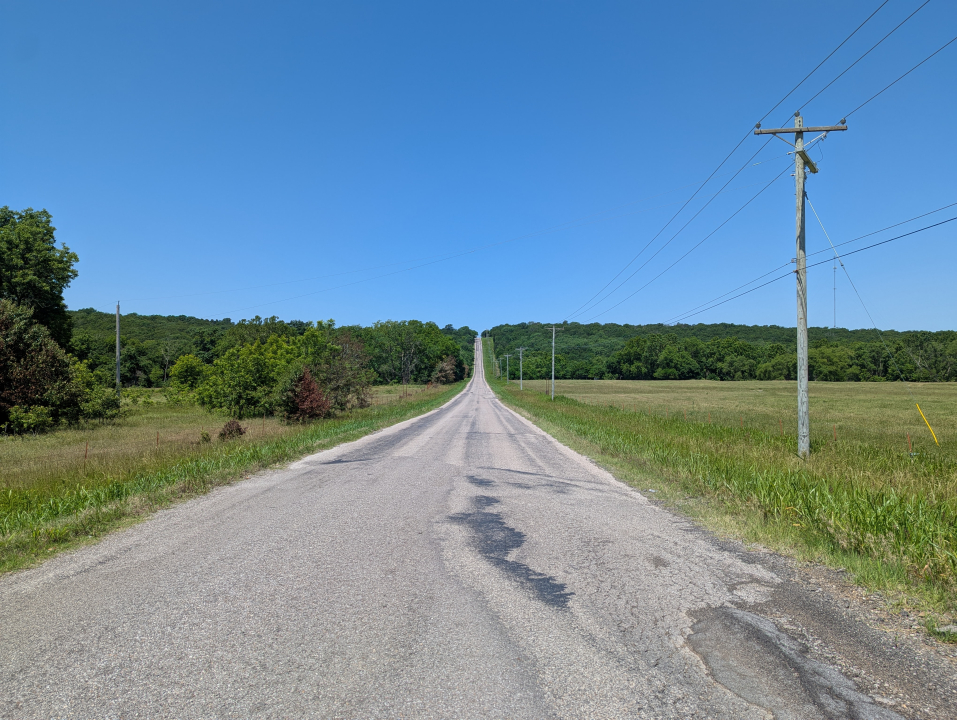
Emporia is a mid-sized town home to Emporia State University, a surprisingly large Hispanic population for this part of the country, and a gazillion trains which blow their horns the entire time they’re in town. The tracks happen to pass directly through the center of town, so no matter where you are, you can hear it, even while indoors. Another train passes through every 30 minutes or so, and they’re required to blow the horn multiple times at each road crossing, which means for about 10 minutes straight. Then you get about 20 minutes of peace, and then the process starts over again.
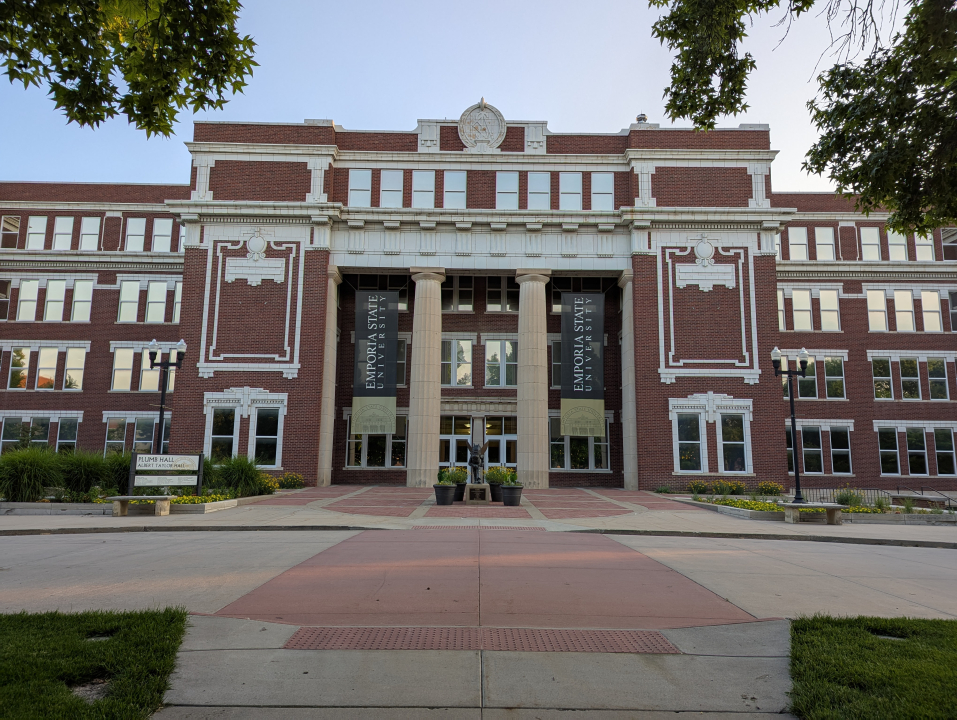
I've already talked about excessive train noise in another journal entry, from the Pony Express. In short, trains are a good thing, but their horns are not. Due to hypertension from chronic noise exposure, it's likely train horns have claimed more lives than they've saved.
While in Emporia, I somehow lucked into an incredible host. As one of the larger towns on the route, it’s also one of the only ones with a bike shop. I didn’t need anything, but simply wanted to hang out in a bike shop for a bit. While I was there, a few people asked me what I was up to, then made a phone call, and I was staying at Josh’s place.
Josh works with homeless people (I never found out exactly what his job is), and his house’s upstairs is essentially its own apartment, which he rents out on Airbnb. No one was staying there tonight, so the place was mine, free of charge. AC, shower, laundry, bed. Living large!
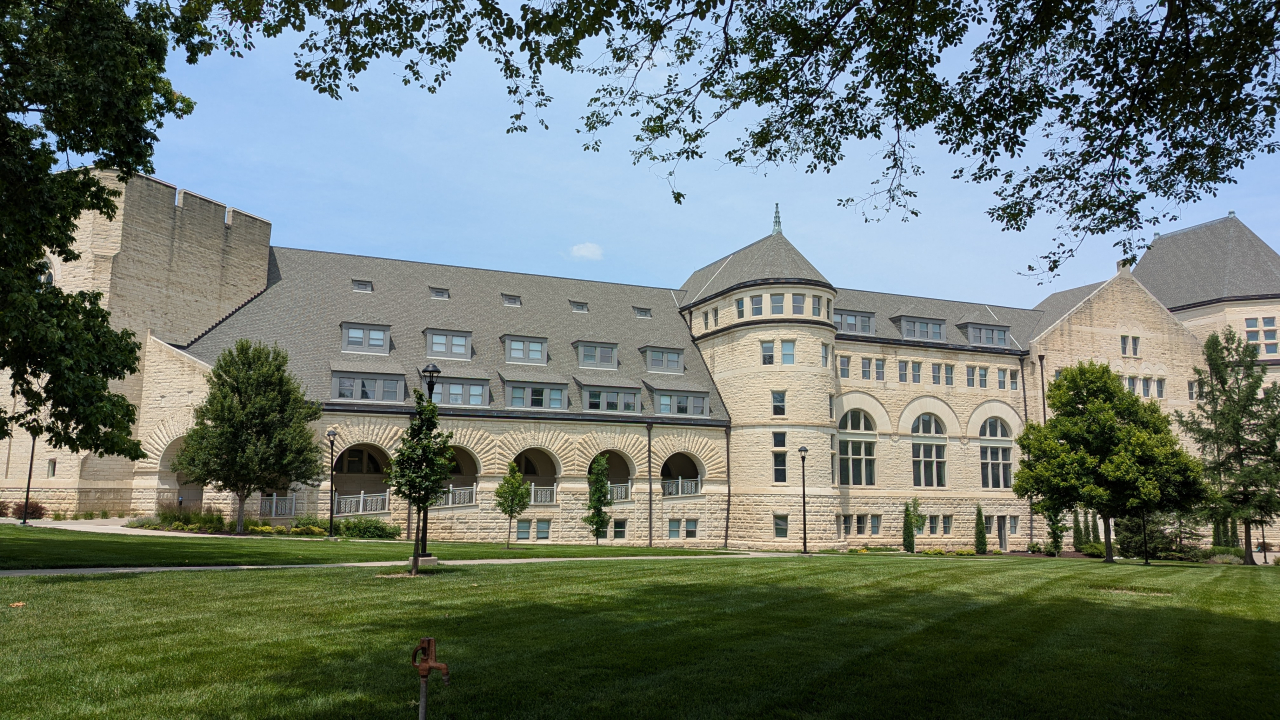
As luck would have it, another excellent host in Manhattan, KS, which was actually off-route, but worth the visit. Andrew happened to work at a brewery and invited me to simply meet him there. After a free beer, I rode to his house a couple miles away, where his delightful wife Brittany told me about her yoga and piano lessons, showed me where to shower and do laundry, then drove me back to the brewery for another couple beers and free dinner. Kansas has truly spoiled me.



 June
June

